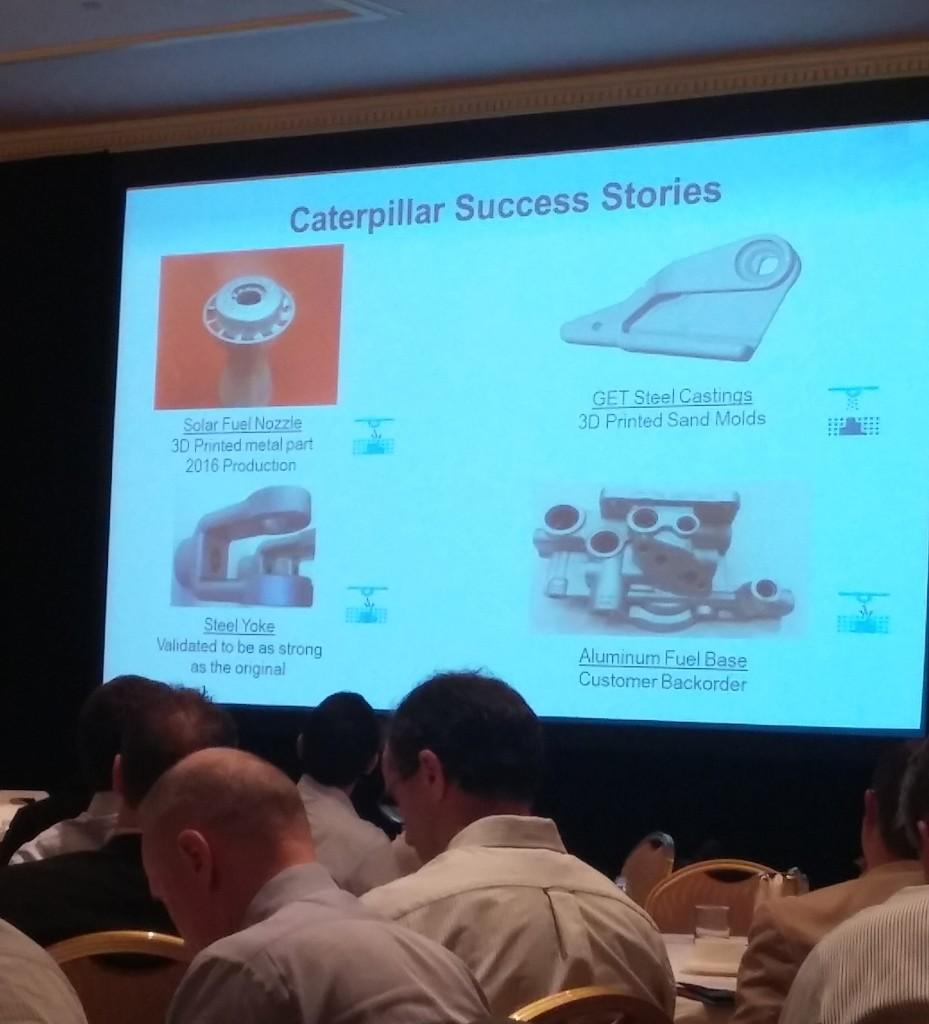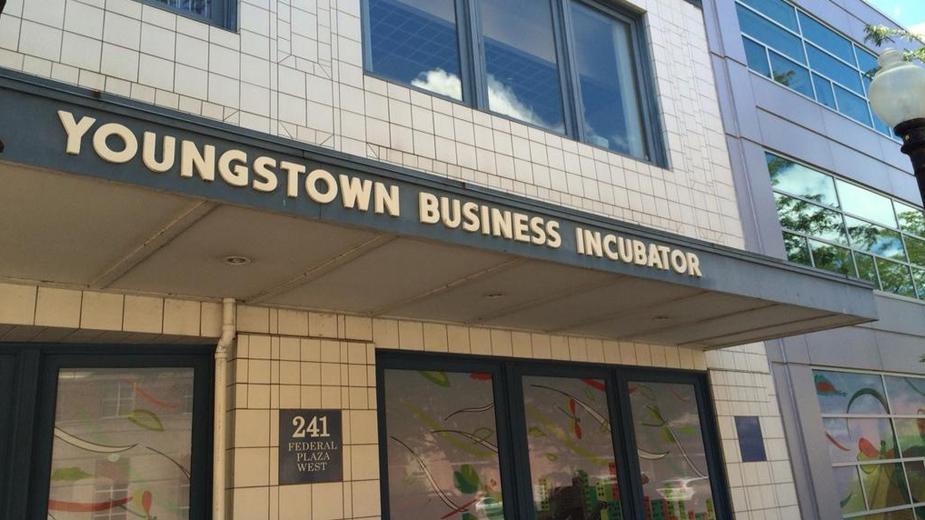 Like many who have lived in one place for their entire lives, I’m fiercely proud of – and defensive of – my hometown. Cleveland has gotten a bad rep over the years, but I didn’t understand the extent of it until I began traveling as an adult. I’d tell people I was from Cleveland, and their responses would range from “Didn’t your river catch on fire?” to “Wow…I’m sorry,” to “Why haven’t you moved?” Cue my fake laugh and quiet seethe. First of all, the Cuyahoga River hasn’t caught on fire since 1969, so get over it already. Secondly, I have no use for your pity – I’ve had plenty of opportunities to move away from Cleveland, but I keep choosing not to, because I love it here, and I will defend it to all haters and condescenders. Go ahead, say “mistake on the lake” one more time, I dare you.
Like many who have lived in one place for their entire lives, I’m fiercely proud of – and defensive of – my hometown. Cleveland has gotten a bad rep over the years, but I didn’t understand the extent of it until I began traveling as an adult. I’d tell people I was from Cleveland, and their responses would range from “Didn’t your river catch on fire?” to “Wow…I’m sorry,” to “Why haven’t you moved?” Cue my fake laugh and quiet seethe. First of all, the Cuyahoga River hasn’t caught on fire since 1969, so get over it already. Secondly, I have no use for your pity – I’ve had plenty of opportunities to move away from Cleveland, but I keep choosing not to, because I love it here, and I will defend it to all haters and condescenders. Go ahead, say “mistake on the lake” one more time, I dare you.
I’m not blind to the fact that my hometown is far from perfect, however. Like many other cities in the Northeastern and Midwestern United States, Cleveland was hit hard by the national decline in manufacturing. As the steel industry faded, Cleveland rusted along with so many other formerly thriving industrial towns in the new Rust Belt, and the effects of that heavy economic hit are still lingering.
There are plenty of signs that Cleveland is on its way back up – out of the ashes of industrial collapse have risen a thriving arts and culture scene, a new flush of small independent businesses, and restaurants that should make even the most jaded New York foodie jealous. Like I said, I love it here, but I can’t deny that on the whole, Northeast Ohio is still an area that needs a lot of work. The overall economy is still pretty grim, and you won’t see a starker visual representation of economic inequality than several areas on the city’s east side, where you can drive down a manicured street of multi-million-dollar houses, turn the corner, and find yourself staring down boarded-up buildings, vacant lots, and potholes the size of Rhode Island.All in all, it’s very fair to say that Cleveland hasn’t recovered from the loss of its major industry, and I won’t argue with that. So what’s to be done? Those steel mills aren’t going to reopen, so it’s time to look in a different direction – and that direction is technology, and 3D printing in particular.
Last week I attended the second annual Benesch 3D Printing Conference in downtown Cleveland, where tech experts, business leaders, and educators all voiced their strong opinions about the necessity of leveraging 3D printing and other up-and-coming technologies if Cleveland businesses want to survive. The message was cautious but optimistic – we need to act fast, but we’ve made a pretty good start already. According to Michael DeAloia, tech columnist for the Cleveland Plain Dealer, who appeared in “The Future of 3D Printing in Northeast Ohio,” a brief film shown at the conference, Northeast Ohio is poised to make a dynamic transition from “rust belt to tech belt” and to surge ahead as a leader in the new American industry.
Part of the transition to a thriving tech-based economy involves some of the city’s oldest businesses getting on board with new technologies. Back in Cleveland’s industrial glory days, my grandfather worked for Caterpillar, Inc., one of the companies that has held on through all of the economic upheaval. At last week’s conference, Caterpillar’s Deputy Chief IP Counsel, John Cheek, spoke at length about not only the intellectual property issues involved in 3D printing, but about how crucial the technology itself is to the survival of long-established companies.
 Caterpillar, whose roots go all the way back to the 1800s as a manufacturer of parts for horse-drawn wagons, now owns more than 80 3D printers and has a large additive manufacturing facility located in Illinois.The company’s willingness to adapt to new manufacturing methods has undoubtedly helped it to continue to thrive for so many years, and the same can be said for American Greetings, one of Cleveland’s oldest companies, which is also turning toward 3D printing to revitalize their business. It’s not enough for the large corporations to change the way they do business, though – if Northeast Ohio is truly going to become a leader again, it’s time to start getting some fresh companies off the ground.
Caterpillar, whose roots go all the way back to the 1800s as a manufacturer of parts for horse-drawn wagons, now owns more than 80 3D printers and has a large additive manufacturing facility located in Illinois.The company’s willingness to adapt to new manufacturing methods has undoubtedly helped it to continue to thrive for so many years, and the same can be said for American Greetings, one of Cleveland’s oldest companies, which is also turning toward 3D printing to revitalize their business. It’s not enough for the large corporations to change the way they do business, though – if Northeast Ohio is truly going to become a leader again, it’s time to start getting some fresh companies off the ground.
Some of the most promise in that respect is actually coming out of Youngstown, roughly an hour to Cleveland’s southeast. If anything, Youngstown was hit even harder than Cleveland by the decline of manufacturing – it’s pretty demoralizing when Bruce Springsteen himself writes an ode to despair and names it after your city. But Youngstown is actively rebuilding, putting 3D printing at its center. The Youngstown Business Incubator was developed in the late 1980s as a response to the loss of manufacturing jobs, and today its focus has shifted largely to the fostering of 3D printing startups. YBI, which works hand-in-hand with Youngstown State University and the also Youngstown-based America Makes, one of the leading 3D printing/additive manufacturing business accelerators in the country, was named the top university-associated business incubator in North America (and number two in the world) in 2015’s UBI Index. YBI has over 30 portfolio companies, many of them 3D printing-related, which include:
- Bravura 3D
- Juggerbot 3D
- 3D Printerworks
- Freshmade 3D
- Smart 3D Solutions, still in the early stages, which is developing a 3D printed smart pressure sensor to be embedded in the soles of running shoes. The sensor sends information to a smartphone, which then provides coaching to the runner to prevent over-striding and injury
A panel discussion at the Benesch 3D Printing Conference included YSU professor Brett Conner. Conner’s enthusiasm about 3D printing was infectious as he described the numerous initiatives currently making the school an additive manufacturing incubator in itself. These include the Launch Lab, a makerspace that brings together students from artistic and technical disciplines for 3D printing-related projects, and the Center for Innovation in Additive Manufacturing, an institute developed to advance research in 3D printing as well as to build industry partnerships.
Conner wasn’t the only one full of excitement about 3D printing’s future in Northeast Ohio. Benesch‘s Mike Stovsky pointed out that Cleveland’s abandoned warehouses, considered a blight on the city and a bitter reminder of its economic collapse, can be leveraged to create a new economy. Let’s turn all of that unutilized space into 3D printing space, he suggested. In my opinion, that was one of the most exciting ideas presented at the conference – there’s something beautiful about the idea of building atop old ruins, transforming brokenness into success.
And it may be happening faster than we think. Dave Pierson, Senior Design Engineer for the Cleveland-based Manufacturing Advocacy and Growth Network (MAGNET), hinted of the development of an “additive manufacturing cluster” that, while still in the early investigative stages, could blast Northeast Ohio to the front of the AM industry. While it may be in the early stages, it certainly appears that a cluster of sorts is forming, with the growth of so many startups out of Youngstown plus the already-established and successful companies such as MakerGear, which is committed to keeping all of its printer manufacturing in Cleveland.

Gregg Moring (L), head of YSU’s art department, and Brett Conner (R), director of advanced manufacturing workforce initiatives [Image: Youngstown State University]
“We really better set our sights on the horizon if we want to be part of the revolution that’s happening in this place,” he said.
That revolution is happening, however, and if Northeast Ohio continues to push forward with the fostering of tech startups and educational initiatives, amazing things could happen. While Cleveland and Youngstown’s proud manufacturing industry may be a thing of the past, they’re poised to be a beacon for other struggling Rust Belt cities, an example of how destruction can lead to rebirth. Do you see potential for Cleveland as the next Tech Belt? Discuss in the Cleveland as Leader in 3D Printing forum over at 3DPB.com.
Subscribe to Our Email Newsletter
Stay up-to-date on all the latest news from the 3D printing industry and receive information and offers from third party vendors.
Print Services
Upload your 3D Models and get them printed quickly and efficiently.
You May Also Like
The Dental Additive Manufacturing Market Could Nearly Double by 2033, According to AM Research
According to an AM Research report from 2024, the medical device industry, specifically in dentistry, prosthetics, and audiology, is expected to see significant growth as these segments continue to benefit from...
Heating Up: 3D Systems’ Scott Green Discusses 3D Printing’s Potential in the Data Center Industry
The relentless rise of NVIDIA, the steadily increasing pledges of major private and public investments in national infrastructure projects around the world, and the general cultural obsession with AI have...
AM Research Webinar Explores Continuum’s Sustainable Metal Additive Manufacturing Powders
Metal additive manufacturing (AM) powder supplier Continuum Powders is working to develop solutions that empower industries to reduce waste and optimize their resources. An independent life cycle assessment (LCA) of...
3D Printed Footwear Startup Koobz Lands $7.2M in Seed Round
California-based Koobz is focused on reshoring the U.S. footwear supply chain with advanced manufacturing processes, including 3D printing. The startup just announced that it has added $6 million to its...


![An abandoned Cleveland warehouse. [Image: Jeffrey R. Stroup via Cleveland Scene]](https://3dprint.com/wp-content/uploads/2016/04/capture-13.png)































